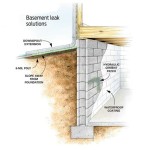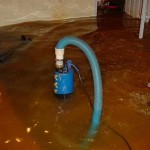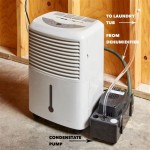DIY Basement Waterproofing Systems: A Comprehensive Guide
Basement waterproofing is essential for homeowners to protect their properties from water damage, mold, and other costly issues. While hiring a professional for basement waterproofing is recommended, there are effective DIY systems available for those with the time, skills, and willingness to undertake the task themselves.
Understanding the Causes of Water Leakage
Identifying the sources of water leakage is crucial before selecting a waterproofing system. Common causes include foundation cracks, poor drainage, hydrostatic pressure, or plumbing issues. Pinpoint the areas where water is entering the basement and consider the severity of the problem to determine the appropriate waterproofing measures.
Choosing the Right DIY System
Various DIY basement waterproofing systems are available, each with its unique advantages and disadvantages. Here are some popular options:
- Exterior Waterproofing Membrane: Applied to the exterior foundation walls, this membrane prevents water from seeping into the basement. It requires excavation around the foundation, but it offers long-term protection.
- Interior Drain Tile System: Installed along the perimeter of the basement, this system collects water and drains it away from the walls. It is less invasive than exterior waterproofing but may not be effective in all cases.
- Sump Pump: If your basement is subject to significant water accumulation, a sump pump can be installed to remove excess water. It is an effective solution for low-lying areas with poor drainage.
Materials and Installation
Before starting the waterproofing project, gather all the necessary materials, including the selected waterproofing system, tools, and safety gear. Carefully follow the manufacturer's instructions for proper installation. Ensure all joints and seams are sealed effectively to prevent water seepage.
Testing and Monitoring
Once the waterproofing system is installed, it is essential to test its effectiveness. Run water around the foundation and observe if water is still entering the basement. Periodically monitor the system for any signs of leakage or damage.
Maintenance and Troubleshooting
Regular maintenance is necessary to ensure the longevity of your DIY basement waterproofing system. Clean gutters and downspouts regularly to prevent water from accumulating around the foundation. Inspect the system occasionally and address any leaks or clogs promptly. If you encounter persistent water problems, consider seeking professional assistance.

Diy Basement Waterproofing Sealonce System Easy Installation Waterproof Com

Diy Basement Waterproofing Tips In Gaithersburg Md

Transform Your Basement With Easy Diy Waterproofing

Do It Yourself Basement Waterproofing The Right Choice

Diy Basement Waterproofing Sealonce System Easy Installation Waterproof Com

Basement Waterproofing How To Install A Water Drainage System Diy

How Does Interior Basement Waterproofing Work

Basement Waterproofing System Products How To Waterproof A Wet Decor Diy

The 3 Major Approaches To Basement Waterproofing News And Events For Systems Inc

Homeowner S Ultimate Basement Waterproofing Guide Forbes Home
See Also








